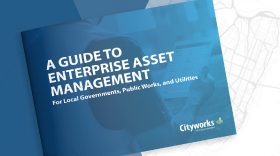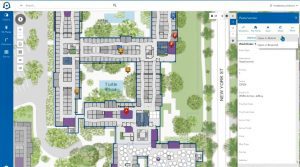There may be no city in America that loves trees more than Philadelphia. More than 10 percent of Philadelphia’s land area—16 square miles—is home to the largest managed urban park system in the world. With more than 1.63 million park and street trees, Philadelphia’s living assets outnumber people.
Under the care of the Philadelphia Department of Parks and Recreation (PP&R), the city’s trees thrive and grow not only in size but also in number. The city and its residents have planted more than 300,000 trees since 2010, when a corporate-sponsored program called Tree Philly set a goal of establishing a 30 percent urban tree canopy by 2025.
About the same time Tree Philly kicked off, PP&R embarked on a three-phase implementation of Cityworks and Esri solutions with POWER Engineers and EBA Engineering. The initial phase of the project established multiple requirements for this vast number of highly dynamic assets that, unlike pipes and poles, appreciate in value and consistently change as they grow and age.
The discovery work established 439 functional and non-functional requirements for the future system. On the operational side, PP&R needed an asset registry for risk management of disease- or storm-damaged trees, plus data for capital planning.
On the ecological side, they needed to store information to support proactive management of tree diversity and environmental impact modeling for stormwater management, canopy cooling, and carbon dioxide sequestration. This data would not only benefit PP&R, but also inform the Green Infrastructure Initiative, an ambitious plan spearheaded by the Philadelphia Water Department (PWD) to improve quality of life for all Philadelphians.
In terms of technology performance, PP&R required reliable remote data capture to record the dynamic information about each tree—including diameter, condition, height, and changing canopy coverage. They needed to easily document customer requests, as well as individual tree and planting site conditions. They needed to efficiently assign work to contracted vendors. And, they requested effective data management and work assignments for field crews using iPads who respond to about 22,000 public service requests per year. Reliability of these mobile applications was crucial to ensure that collected data wouldn’t be lost if the connection was interrupted.
The compatibility of Esri’s ArcGIS Online, applications, and add-ons, as well as the foundation of Cityworks 15.3 technology and mobile native apps, allowed for configuration of a “right fit” solution for office, field, and mobile applications.
As the project moved closer to the pilot and testing phases, further refinements emerged as the team aligned with International Asset Management (IAM) and International Society of Arboriculture (ISA) best practices.
To reduce hardware expense and system maintenance, the POWER and EBA team designed a fully scalable cloud architecture for Cityworks 15.3 deployment in Amazon Web Services. This step required the help of the Philadelphia Office of Innovation and Technology in meeting city standards and service level agreements. The project used the cloud environment to test the integrated field use of Cityworks mobile and Esri’s Collector applications.
Because most of the planting, pruning, and tree removal work is contracted, PP&R also requested a simplified contract process, which PP&R, Cityworks, and POWER will continue to refine for end users and managers. To capture visual asset data, the team leveraged Cyclomedia Cycloramas to record and extract spatial features with street view photography for reference in the field. PP&R interns gathered accurate tree condition information from Cycloramas and added standardized height measurements from field inspections to fully populate existing tree and planting site data fields. This information can be logged with public service requests so that PP&R staff can assess a tree’s condition, height, and location before they arrive on the scene.
As the comprehensive discovery, pilot, and testing phases near completion, deployment of the full “right fit” pilot is scheduled for later this year. John Piller, PP&R project manager is already eager for go-live. “We look forward to managing our street and park trees as true assets and leveraging the Cityworks and Esri platforms to enhance our business processes with the goal of greater efficiency and customer service to the citizens of the City of Philadelphia,” said Piller.
This emerging coordination between departments and other stakeholders, made possible by technology, will enable the City of Philadelphia to take a holistic and data-driven approach to managing these living assets. In turn, the city’s dynamic urban canopy will continue to enrich environmental health and quality of life for generations to come.
Want more info like this? Explore other City of Philadelphia customer success stories.
Peter Godfrey is a senior consultant who has been working with parks and urban forestry for over 20 years, and Chris Kulchak is a marketing coordinator at POWER Engineers. Contact them at peter.godfrey@powereng.com and chris.kulchak@powereng.com.








Comments (0)